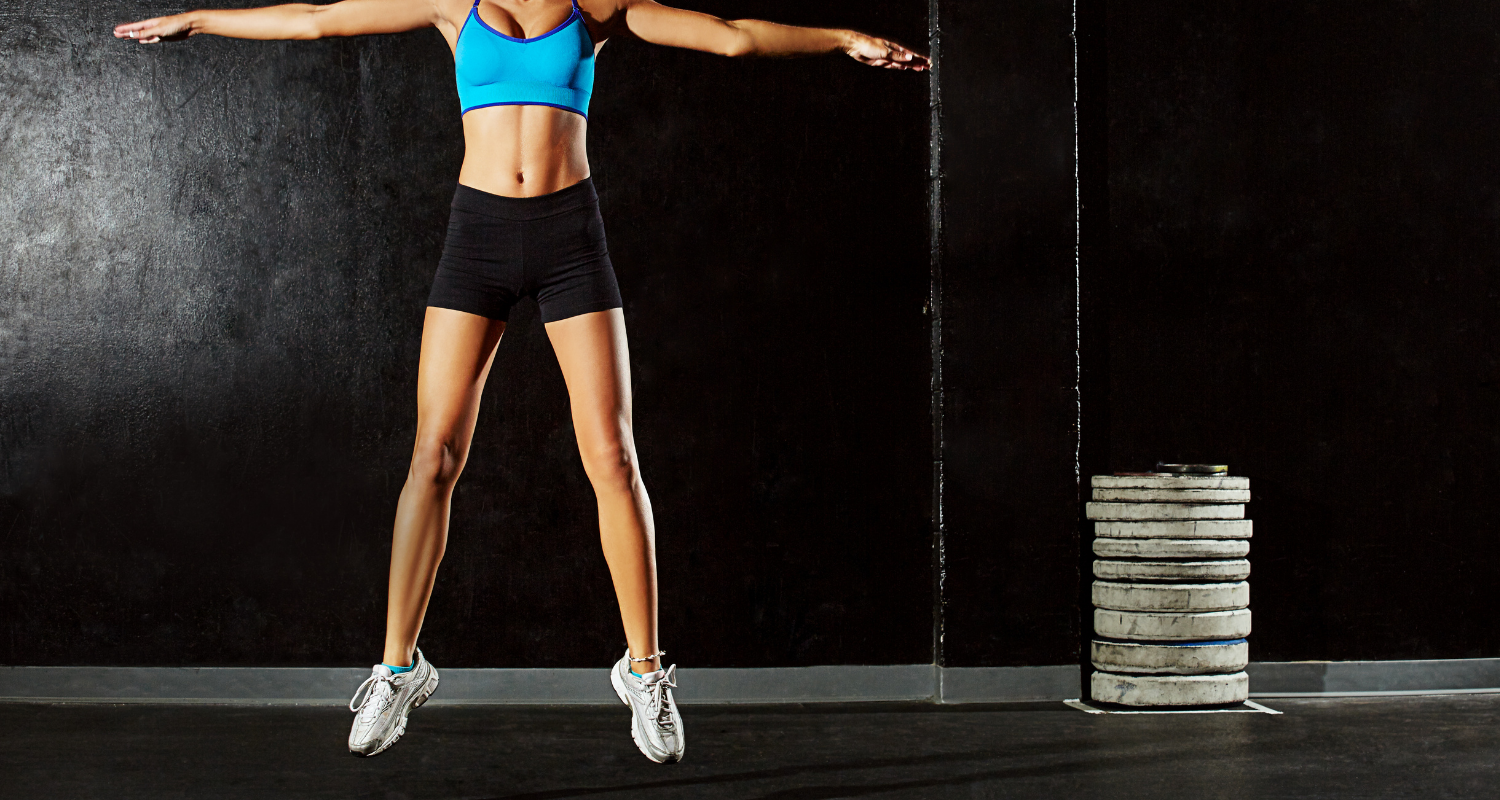Jumping Jacks Pay Dividends
Jumping jacks probably don’t get their due respect. The jumping jack as a plyometric movement is, nonetheless, quite effective at working the whole body. While most often relegated to warm-up duty, they can be used as a stand-alone workout developing coordination, quickness, power, and cardiovascular and respiratory endurance.
Are They Right for You?
Jumping jacks are a comparatively high-impact activity. One the one hand, this impact causes bone microfracturing that prompts growth and, thus, actually increases bone density and makes for stronger bones over time. On the other hand, high impact raises the risk of injury from a sudden incident – like a sprained ankle – or from repetitive action – like wearing down your joints, especially for those carrying the extra weight of high body fat.
Your choice of jumping surface will help or hurt. Concrete and asphalt are less than ideal jumping surfaces; they’re too hard. Natural grass, rubber-matted or hardwood floors are more forgiving. If you do find yourself on a hard surface, try to wear a pair of sneakers with cushion – like cross trainers.
As with any routine, be sure rest is part of it.
Proper Execution
he standard jumping jack starts standing with your feet nearly together, about hip-width apart, and arms hanging relaxed at your sides. Then, pushing off with the balls of the feet, one jumps and the feet break contact with the ground with the legs sweeping out to the sides while raising the stiff arms in an arc to meet above the head as the feet simultaneously land no less than shoulder-width apart. Jump in reverse back to the start position to complete a repetition.
Jumping jacks can easily become more intense by increasing the speed of each repetition. Make sure you can stay under control, maintain balance, and remain coordinated at slow speed before jumping higher or faster. If you can’t keep it crisp, slow down.
Make It a Workout
Warm up with some easy, slow, standard jumping jacks to raise your respiratory rate, increase blood flow throughout the entire body, and elevate core temperature. This will loosen muscles and reduce the tightness in soft tissues, lessening the chances of a sudden injury – like a twisted ankle.
Establish a target. For instance, you say, “I’m going to do 25 jumping jacks, rest for 30 seconds, and then do another set.” One might choose to 10 sets.
Alternatively, you might decide, “I’m going to do jumping jacks until I get tired, rest until I’m ready to restart, and then do more. I’ll stop when I’ve done 200 repetitions or 20 minutes has passed, whichever comes first.”
In any event, you need to decide on repetitions, rest periods, and duration. Perhaps you do 5 sets of 30 repetitions or maybe three, 10-minute blocks of continuous jumping jacks.
You could try doing intervals, i.e., segments of jumping jacks alternated with segments of star jacks. Star jacks start with the body in a crouching position: knees bent and hands touching the floor. This starting position promises more power for a higher jump, a more difficult landing, and is a greater effort.
Changing speed, repetitions, rest, and duration affect intensity and will affect heart rate, respiratory demand, caloric burn, and fat-burning potential.
Over time, as you become increasingly fit, you might even try switching from a jumping jack workout to a burpee workout. Burpees involve even more muscle as it’s a more complex plyometric movement; but, you’ll build more total body strength.

Leave a Reply